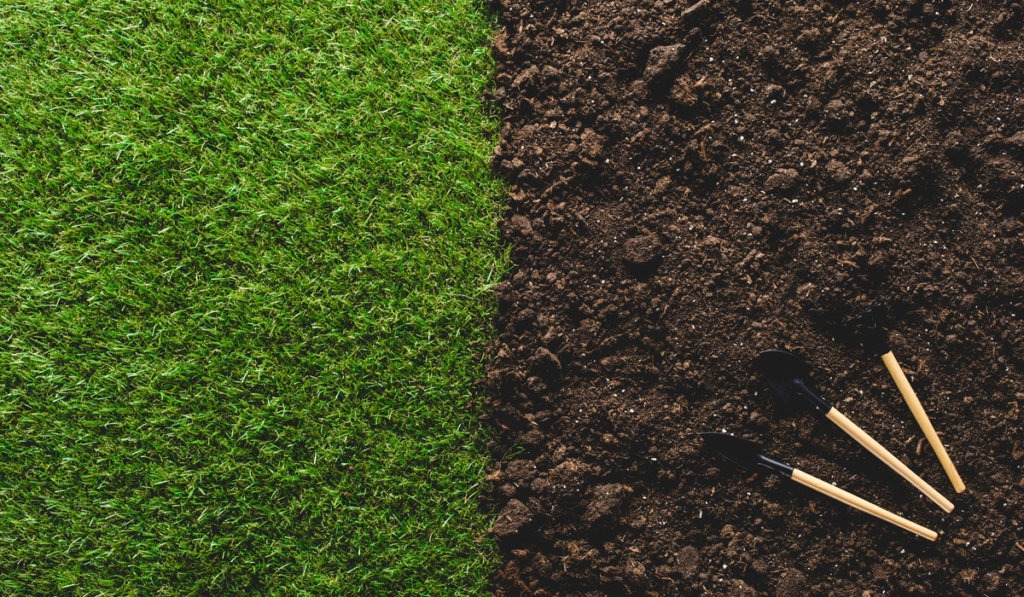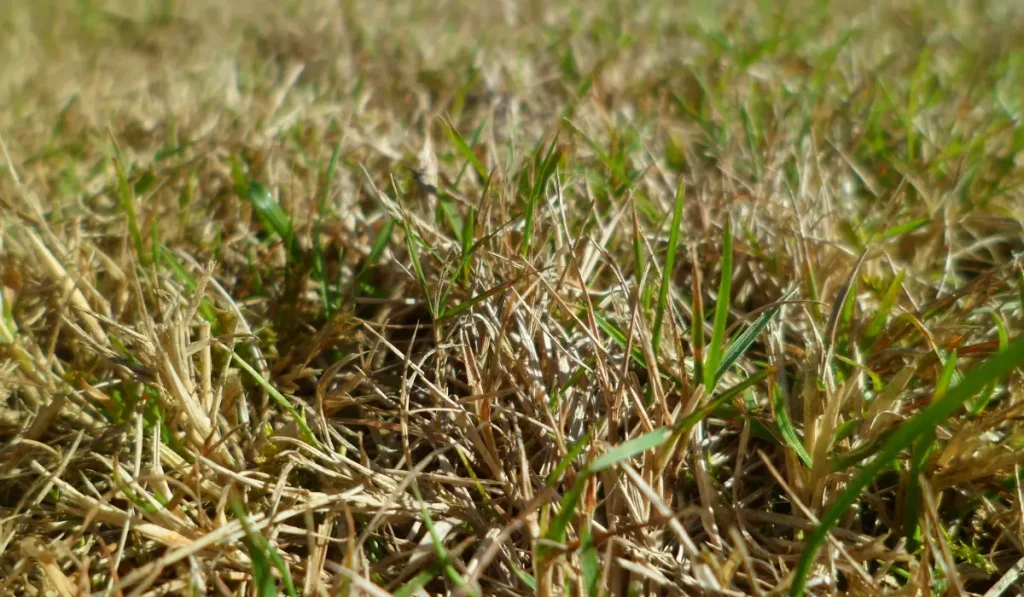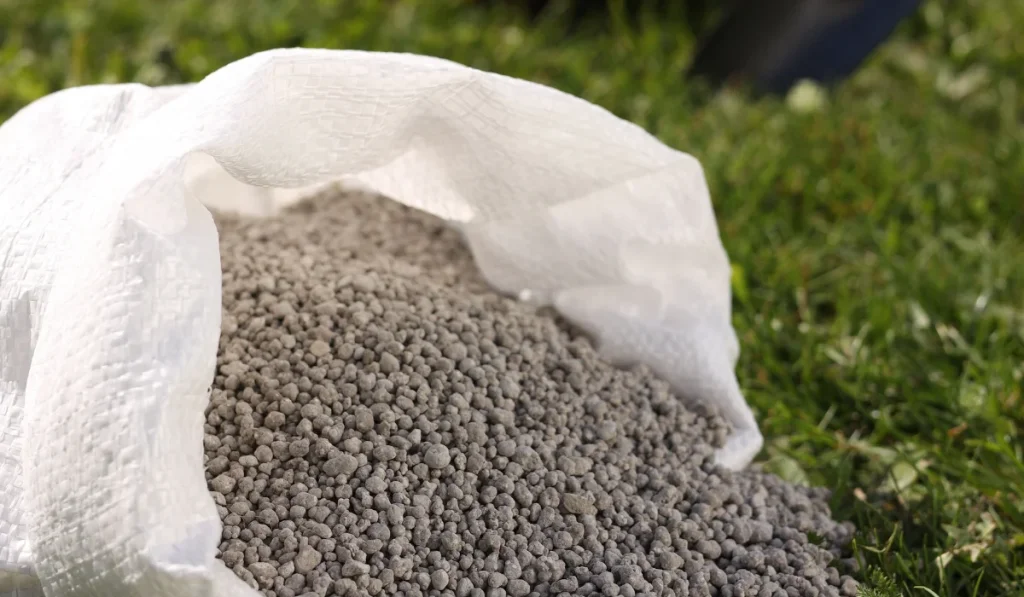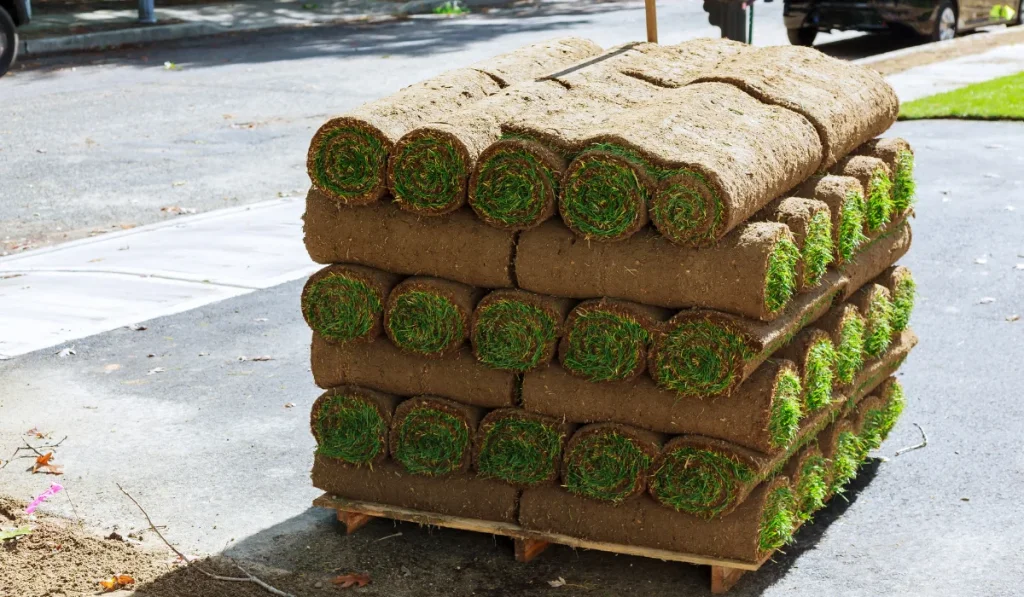You walk out into your yard, looking at all your hard work growing diverse and beautiful plants, but nothing looks healthy. Your instinct is to blame your fertilizer, the weather, the water, the plants, or even yourself.
But before you do that, consider that the types of soil you use may be preventing your lawn from reaching its full potential. Though all soil is a mix of organic matter and minerals, the texture, acidity, and compaction of the soil all affect your ability to grow different types of plants successfully.
This article explores soil types in depth to give you practical steps on how to use them to your advantage so you can be proud the next time you walk into your yard.
Key Takeaways
- Soil comes in four types, each with four characteristics that have different benefits and drawbacks for your plants.
- Your soil’s composition can be tested using multiple methods, including those that require testing devices and those that can be done by hand.
- A soil’s pH level, which determines its acidity or alkalinity, is another factor that influences how well certain plants will take to it.
- Practical tips on how to maximize the growth potential of your garden based on these key factors.
What Is Soil Type?
“Soil type” refers to how different soil textures affect how the soil is compacted, which changes how water seeps through it and how it withstands vibration.
Since the size of the particles differs, different plants react to each soil type differently. Consider this breakdown of the different types of soil as a field guide to the hidden geological makeup of your own backyard.
Soil Classification
The main types of soil include Type A, Type B, Type C, and Multi-type.
Type A Soils
Type A soils are the most stable. They open up once water passes through them but remain comparatively compact in their natural state.
Type A soils include clay soil, clay loam, sandy soil, silty clay, and sandy clay.
Type B Soils
Type B soils are less compact than Type A. Cracks in this soil cause it to break apart more easily as well as drain water more efficiently.
Type B soils include silty soil, silty loam, and sandy loam.
Type C Soils
Type C soils are the least stable of all in terms of compression and stability. Type C soils break apart with almost no effort and retain the least amount of water. Examples include gravel and sand.
Multi-type Soil
Some soil has layers of Type A, Type B, or Type C soil. For the purpose of clarification, Multi-type soil is classified by the weakest type it contains.
Characteristics of Each Soil Type
These soil types can also be distinguished by what the soil is made of and how its particles interact. These characteristics define how much of the soil is clay soil, silt soil, sandy soil, and loam soil.
Clay Soil
The texture of clay soil expands and shrinks depending on its water content, which is why it clumps together. Clay soil adds denseness to a soil mixture but cannot be used alone since clay particles can be so tight that roots, water, and air fail to properly interact.
To improve clay soil, organic materials such as mulch, compost, and pine bark can improve its drainage. Add a few inches on top, then an inch more each year to make the clay soil structure more forgiving.
Growing in raised beds can also improve the drainage of clay soil, which retains a lot of water. Refrain from tilling clay soil as this can help weeds set up shop and strangle your plants.
Silt Soil
The soil particles in silt soil are larger than clay soil yet smaller than sandy soil. This puts its water retention rate somewhere in the middle.
Silty soil is known for being fertile, which is why agricultural businesses emphasize it in their soil mixtures. But since silt soil contains weathered rocks, over-compacting or walking on it can lead to inefficient drainage.
Adding 1-2 inches of organic matter to a silt soil plot each year can help support water drainage without causing the surface to crust over.
Sand Soil
Sandy soil has the lowest moisture retention of the main soil types due to its mineral rock content, which reduces the amount of water it can hold.
This low water holding capacity allows sandy soil to work well as drainage, though its nutrient content is low compared to other types of soil.
To improve its effectiveness, sandy soil needs at least 3 inches of organic matter on top, ideally compost or manure, adding 2 inches every year. Mulch helps the plants retain moisture as well as ward off overheating, which is another disadvantage of sand.
Note that a cover crop can also assist in temperature control on a plot of sandy soil.
Loam Soil
Loamy soil utilizes a mixture of sandy soil, clay soil, and silty soil to create a multipurpose garden soil that uses the beneficial properties of each.
As a mix of organic material and inorganic minerals, loam soil has a high calcium content as well as a high pH level (see below for more on how soil acidity affects plant growth).
Since its compaction and mineral content sit somewhere between sand and clay, loam already has decent water retention and drainage.
However, loamy soil can still be maintained with an inch of organic material like compost. Watering it at a deeper layer and less frequently can also help its silt particles retain their texture.
Testing Soil
Knowing the properties of the types of soil can only take you so far unless you can perform a soil test of your own to figure out what you’re working with.
The amount that soil resists becoming compacted is called its “compressive strength,” determined by its type and characteristics. Soil that lacks compressive strength like sand can’t retain water as well.
Yet too much strength can restrict healthy plant roots from growing. The best soil has a balanced compressive strength that supports both root penetration and water retention.
To learn your unique soil profile and create the best soil possible, here are the six most common methods in soil science for figuring out the kind of soil you have.
Penetrometer
A penetrometer is a pocket-sized, spring-loaded device that can measure compressive strength. All you do is push the device into the soil and wait for a reading to appear on its indicator, either in tons per square foot (TSF) or kg per square centimeter (kPA).
Note that these devices have a margin of error of around +/- 30%, so multiple readings should be used.
Shear Vane
A shear vane is a device consisting of blades that turn by twisting a knob. The device measures the soil’s resistance to being turned by the blades, which is a measure of its compressive strength.
Note that the device’s readings should be multiplied by two to get results in TSF or kPa.
Thumb Penetration
Thumb penetration is a much older method for determining the compaction and aeration of a patch of soil. By pressing your thumb into the soil, you can estimate the soil type based on its resistance to compression, revealed by your thumb’s imprint.
For example, if it’s difficult to make a dent in the soil, it likely leans toward Type A. If your thumb pushes in but only around the length of your nail, then it’s likely Type B. And if you can push your whole thumb into the soil without much effort, it’s probably Type C soil.
Thumb penetration is a subjective soil test recommended for advanced growers who already have a feel for soil types.
Dry Strength
Dry strength is another subjective soil test. To perform it, make sure the soil is free of moisture first. Then, pick up a handful and crumble it between your fingers.
Sand and silt soil will not offer much resistance. Clay soil will clump and then break into smaller chunks, even when mixed with sand.
If your soil only breaks into big clumps with effort, the soil is called “unfissured.” Some fissuring is needed to support healthy plant growth.
Plasticity or Wet Thread
Unlike dry strength testing, plasticity soil tests (also called “wet threads”) start with a ball of moist soil. The goal is to roll it out with your hands into a thread about 0.1 inches wide by 2 inches long.
After it’s rolled out, try to pick it up by either end. Cohesive soil (more clay) will remain a wet strand. Non-cohesive soil (more sand) will tear or break apart.
Visual
Finally, experienced growers can test soil simply by looking at it. A visual test looks for tension cracks in the topsoil, signs of water seeping or standing, and evidence of sliding or bulging.
As you become more experienced with recognizing soil types, you’ll be able to conduct a visual test more accurately to categorize your yard and plan your strategy accordingly.
Understand pH Levels
A pH level is a measure of acidity vs alkalinity. In soil, this level usually sits between 3.5 and 10, varying slightly depending on the amount of rainfall the area gets (more rain means less acidity).
To classify soil using its pH reading, 6.0-7.5 is the range for neutral (7.5 and over is alkaline, while 6.0 and under is acidic). Anything below 5.0 or over 8.0 poses a danger to most plants, but different plants can thrive or die at other levels depending on their needs.
This is because nutrient availability is at its maximum when soil is as close as possible to pH neutral. In acidic soil, plants can have trouble growing due to deficiencies of vital nutrients such as calcium, magnesium, phosphorus, and molybdenum or toxic buildups of aluminum and manganese.
Conversely, soils that are too alkaline, such as carbonate soil and chalky soil, can be deficient in zinc, boron, copper, manganese, or sodium.
Testing soil pH is vital for managing these nutrients. You can buy an easy-to-use test kit to see if you have more alkaline soil or acidic soil.
Some fertilizers can make the soil more acidic by including sulfur and nitrogen in their formulas. Oppositely, for soils that are too acidic already, adding lime or dolomite can lower their pH levels.
Note that the more clay content your soil has, the more resistant to pH level changes it will be.
Tips for Optimizing Soil for Plant Growth
All this information should boil down to practical strategies that you can use to optimize your plants and keep them healthy for years to come. Here are 7 tips to review:
1. Add organic matter
Remember that soil includes not only dirt and rocks but also the organic matter that helps improve its nutrient content. The best soil amendments are those that encourage beneficial fungi growth, worm activity, and water retention.
Compost, mulch, manure, humus, and peat soil are valuable additions to your soil’s composition.
Many fertilizers and store-bought organic additives contain vital nutrients like nitrogen, potassium, and phosphorus to give your soil the natural resources it needs.
2. Control pH values
Soil needs the right balance between acidity and alkalinity to support healthy plant growth. Note that different plants have different requirements. Rhododendrons, for instance, grow better in acidic soils (pH 4.5-6.0) while perennials prefer neutral-alkaline soils (pH 6.0-7.0).
Acidity can be managed best by keeping track of rainfall and adding sulfur-based fertilizers for more acid or a lime/dolomite mixture for less acid.
3. Regulate air and water content
A soil’s compaction changes how well the plant’s roots can spread. Even simply walking through a flower bed can change the soil’s air content.
Therefore, consider raised beds for soils that already have a high water retention rate like clay, with a healthy mix of compost renewed every year. Learn your soil type so you know how often to water and how deeply.
4. Test frequently
Managing your garden’s pH levels as well as its water, air, and nutrient content requires frequent testing. As demonstrated above, kits are available for laboratory tests, but many tests can be done at home.
5. Use cover crops
Consider planting a cover crop to prevent rainfall from eroding your topsoil. Cover crops also add nutrients to the soil with their own foliage.
6. Keep diversity high
Diverse crops are less susceptible to diseases, more stimulated, and more desirable for beneficial microorganisms.
Cover crops can increase diversity, but so can a regular plant rotation.
7. Ditch the chemicals
Most pesticides do more than kill the intended targets. They also make plants inhospitable for beneficial pollinators and other animals, even the natural predators of the pests.
Since healthy soil requires a healthy natural food web, find natural solutions to pests, and ditch the chemicals.



